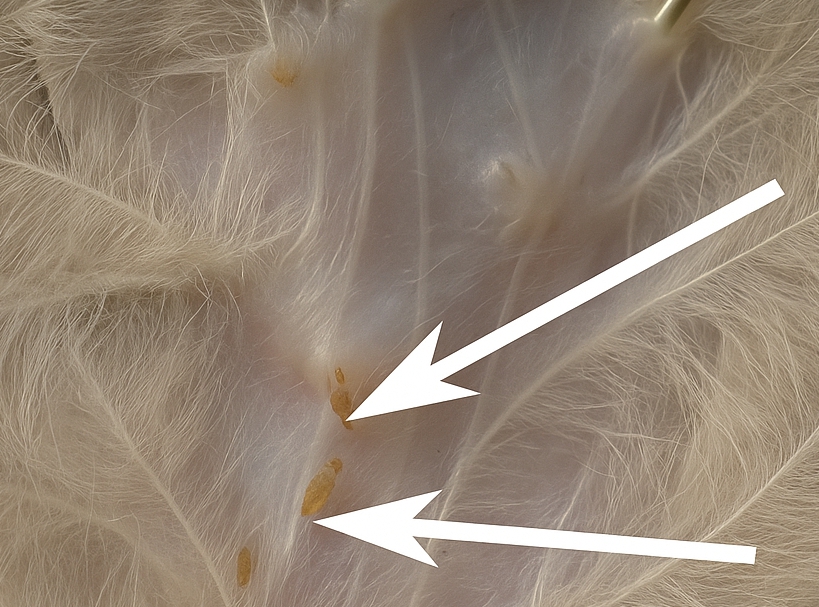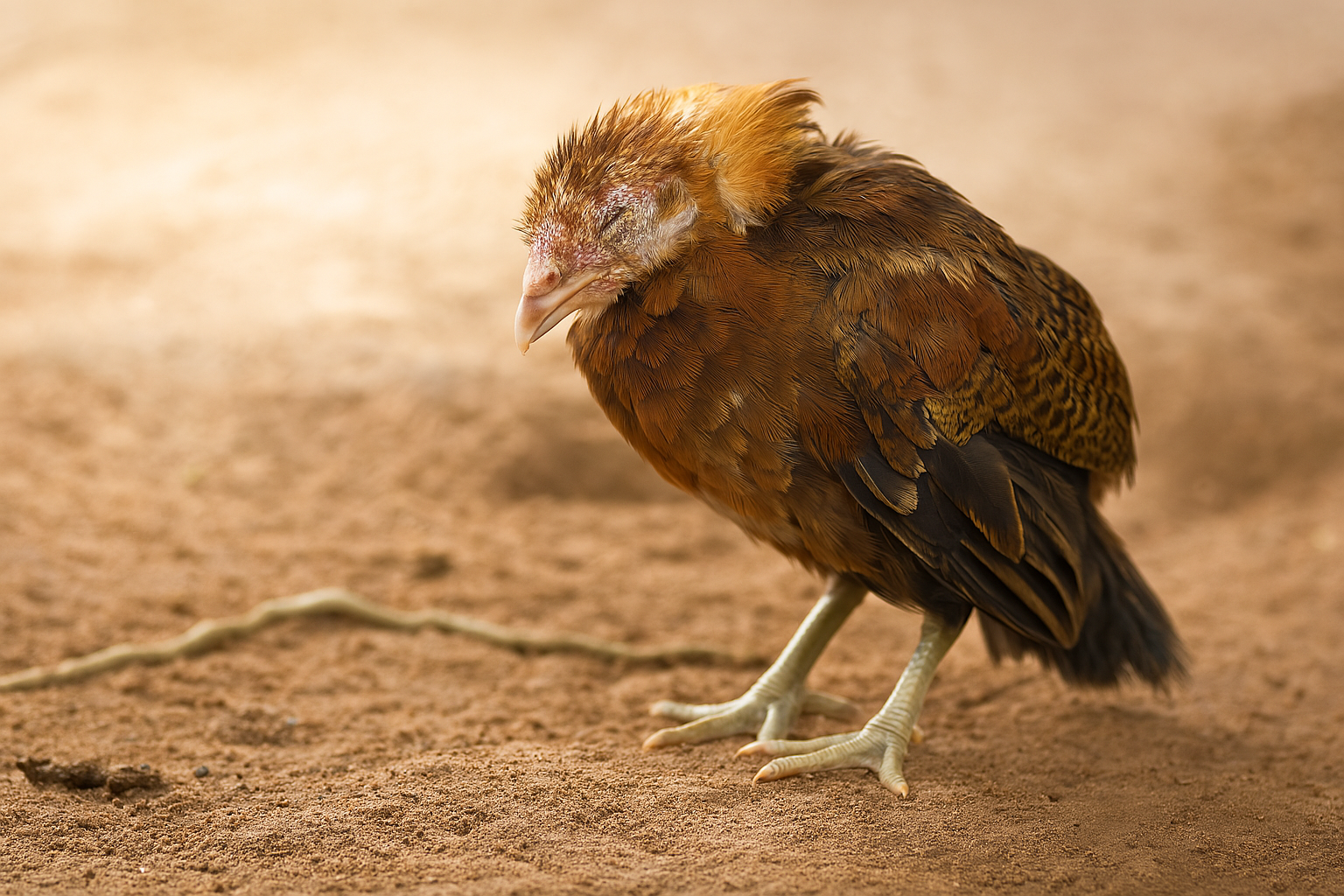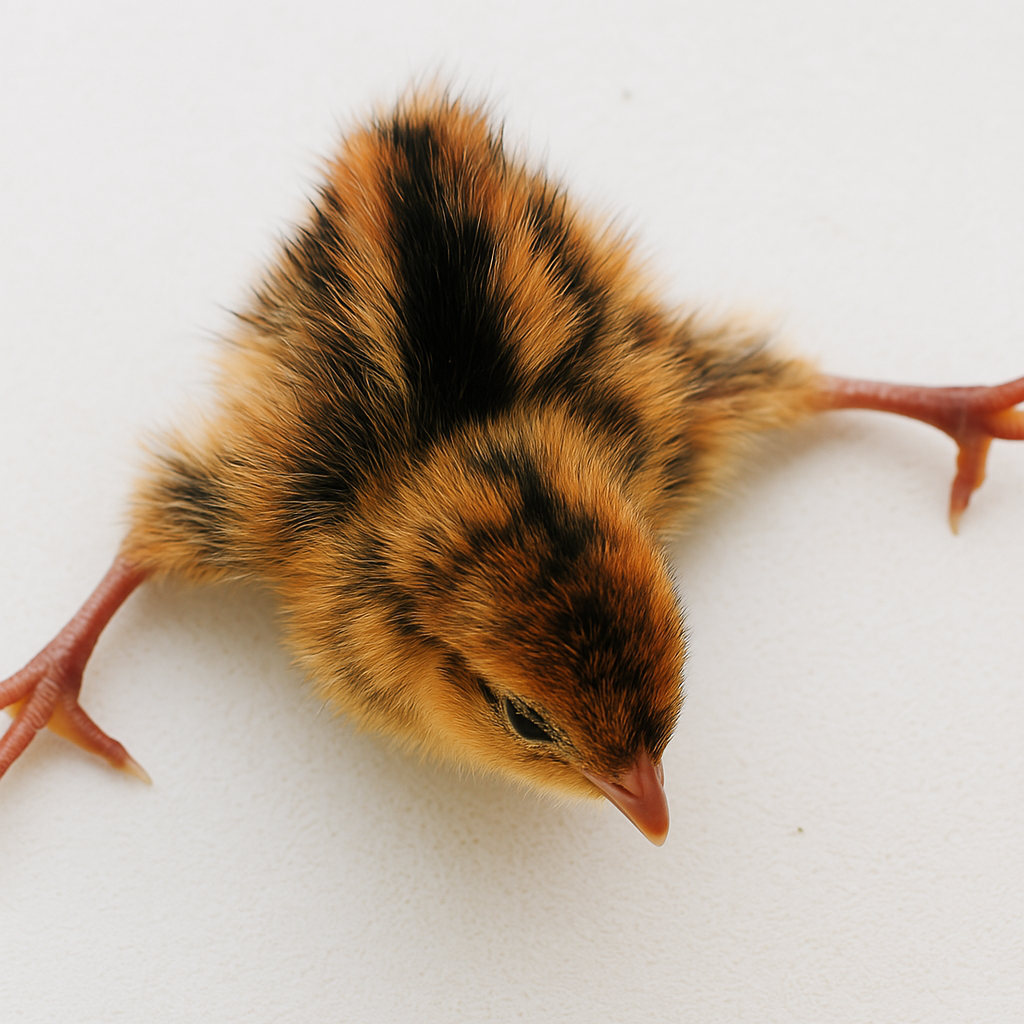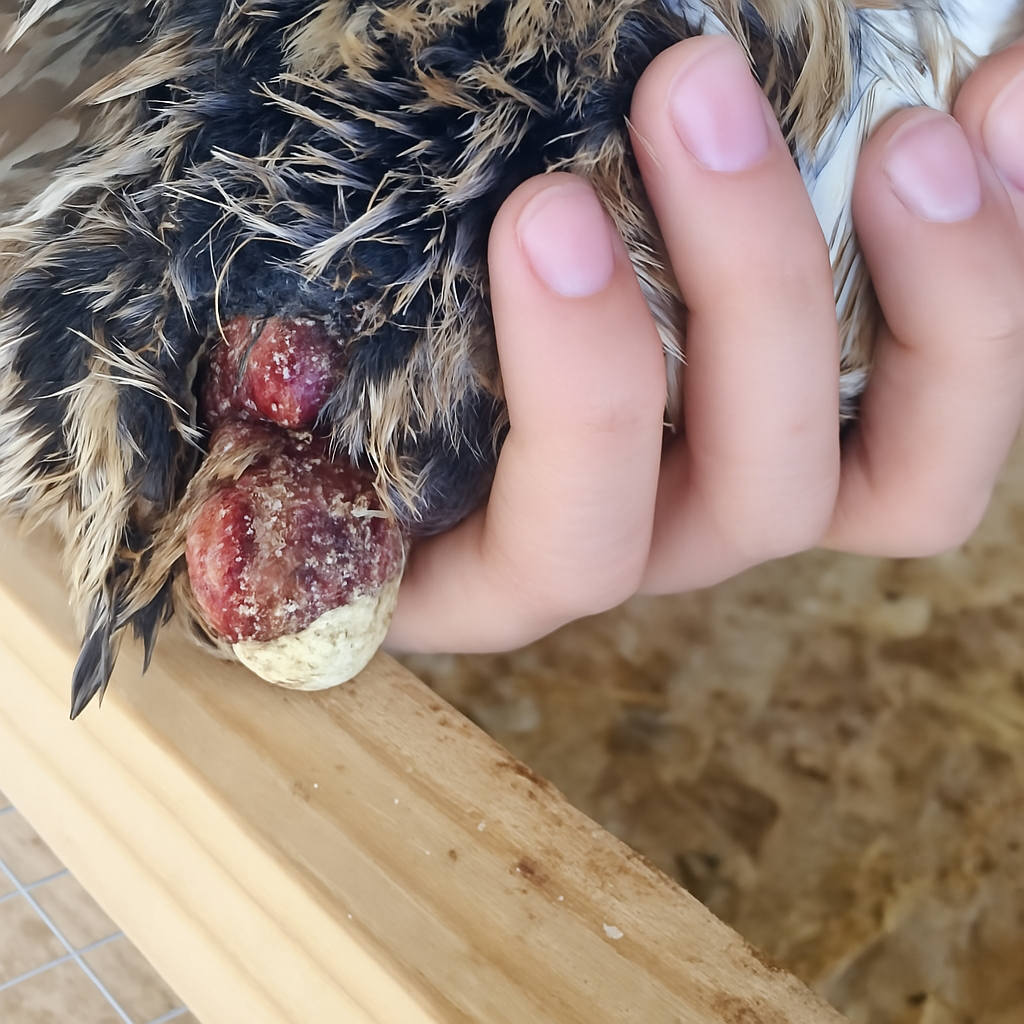Mite and Lice

Mites and lice are common external parasites in quails. These pests irritate the birds by feeding on their blood, feathers, and skin. Signs of infestation include feather loss, excessive preening, restlessness, and reduced egg production. Mites hide in the quail's environment, while lice live directly on the bird. Regular cleaning, dust baths, and anti-parasitic treatments can help control infestations.
Steps:
Treatment
Isolate Infected Quails
Isolate any quail that shows signs of mites or lice is an important first step in controlling the spread of the parasites. By keeping the infected quail separate from the rest of the flock, you can prevent the mites and lice from transferring to healthy quail.
Dust Baths
Diatomaceous effectively kills lice and mites and can be found at most pet stores. Create a dust bath for your quail using sand and sprinkle diatomaceous earth on top. They will roll in the bath, and the diatomaceous earth will work to eradicate the pests in their feathers.
Clean the Environment
Thoroughly clean the quail enclosure, including all bedding, perches, and accessories. Disinfect surfaces to remove any lingering eggs or larvae that could cause reinfestation. Regular cleaning of the habitat is crucial in creating an environment that discourages parasite development and spread.
Repeat Treatment
Monitor the quails regularly for signs of recurring infestation. Repeat the dust bath and insecticidal treatment as recommended by the product instructions or your veterinarian. Consistent treatment and good hygiene practices are key to fully eradicating mites and lice from your flock. The process may take up to three weeks for complete eradication.


Coccidiosis
Coccidiosis is a common parasitic disease in quails caused by protozoa. It affects their digestive system, leading to symptoms like diarrhea, weight loss, and lethargy. In severe cases, it can result in dehydration and death if left untreated.
Read more
Splay Leg
Leg splay, also known as spraddle leg, is a condition in quail where a chick's legs splay outward, hindering its ability to stand or walk properly. This issue often arises from factors such as slippery brooder surfaces, improper incubation conditions, or nutritional deficiencies.
Read more
Egg Binding
Egg binding occurs when a female quail is unable to pass an egg. It can be caused by factors such as poor nutrition, lack of calcium, or oversized eggs. Symptoms include lethargy, straining, and swelling near the vent. Immediate veterinary care is often needed to assist with egg passage and prevent complications. Egg binding can lead to potential complications such as infection, internal damage, or even death.
Read more